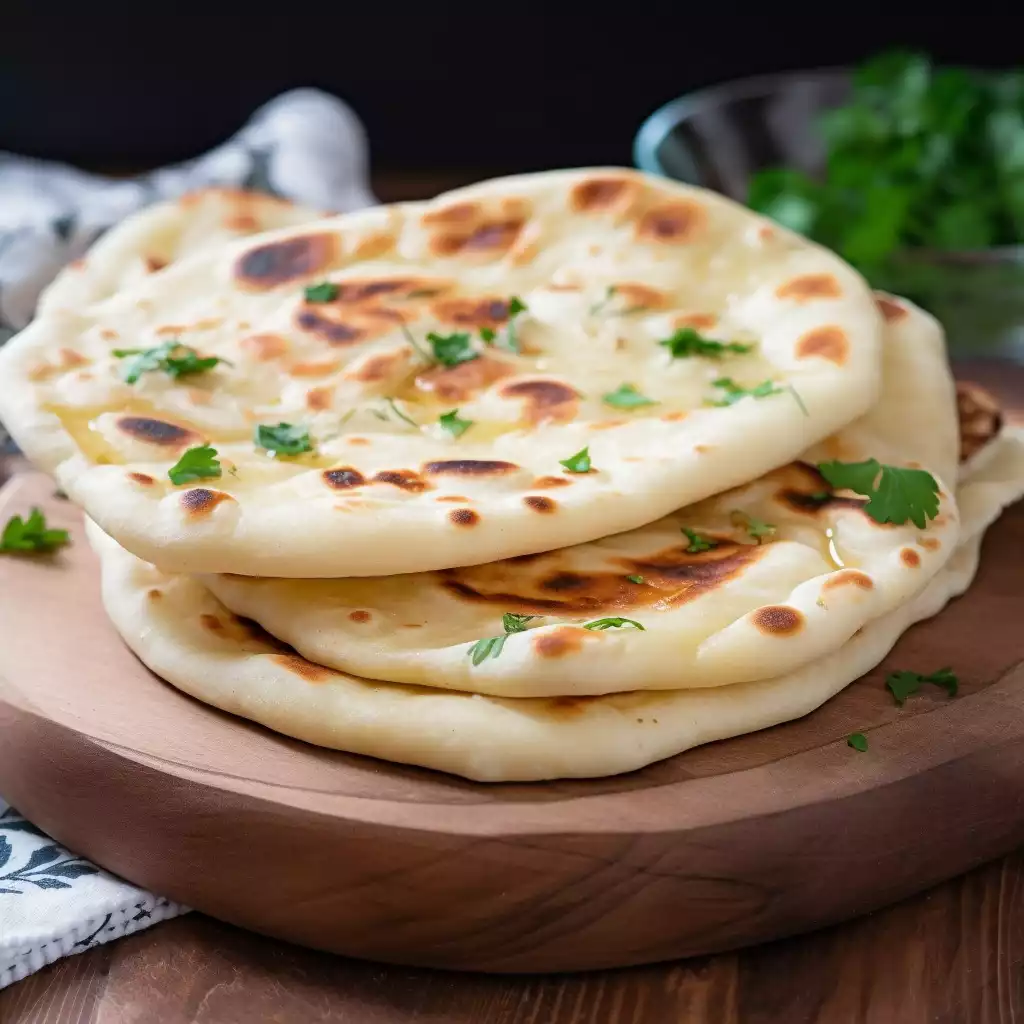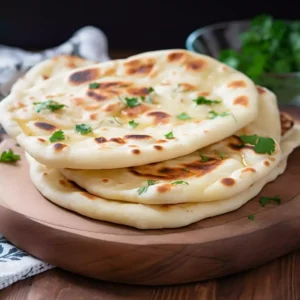
Making naan bread without yeast might sound like a bit of a culinary feat, but fear not, because I’ve got a recipe that’s both simple and delicious.
Naan, a traditional Indian flatbread, is usually made with yeast to help it rise, but this recipe skips that step, making it perfect for those moments when you’re craving fresh bread but don’t have yeast on hand.
This no yeast naan bread recipe brings together a handful of pantry staples to create a soft and fluffy bread that pairs perfectly with your favorite curry or dip. With just a few basic ingredients and simple steps, you’ll be enjoying homemade naan in no time.
While traditional naan recipes require time for the dough to rise, this no yeast version cuts down on wait time without sacrificing flavor or texture.
Whether you’re a seasoned home cook or just starting out in the kitchen, this recipe is sure to become a go-to whenever you’re craving a taste of India.
Expert Tip: For extra flavor, you can add minced garlic or nigella seeds to the dough before rolling it out. This will give the naan bread a delicious aromatic boost.
Plain Flour: Plain flour serves as the base for the naan dough, providing structure and a soft texture to the bread.
Baking Powder: Baking powder helps the naan bread rise and become fluffy without the need for yeast.
Sugar: A touch of sugar adds a hint of sweetness to balance out the flavors of the bread.
Salt: Salt enhances the overall flavor of the naan, bringing out the taste of the other ingredients.
Yoghurt: Yoghurt adds moisture to the dough while also contributing to its soft texture and slight tanginess.
Milk: Milk adds richness to the dough, resulting in a softer and more flavorful naan bread.
Oil: Oil helps to keep the naan bread tender and prevents it from becoming dry.
Coriander (Chopped): Chopped coriander is used as a garnish, adding a pop of freshness and color to the finished naan bread.
Expert Tip: If you don’t have a non-stick pan, you can use a cast-iron skillet or a regular pan instead. Just be sure to lightly grease the pan with oil before cooking the naan.
Expert Tip: Make sure to knead the dough until it becomes smooth and elastic, as this will help create a softer and more pliable naan bread.
Yes, you can substitute gluten-free flour for the plain flour to make gluten-free no yeast naan bread.
Yes, you can freeze the naan bread for later use. Simply wrap it tightly in plastic wrap or aluminum foil and store it in the freezer for up to three months. To reheat, thaw the naan bread in the refrigerator overnight and then warm it in a skillet or in the oven until heated through.
Yes, you can use Greek yogurt as a substitute for plain yogurt in this recipe. However, keep in mind that Greek yogurt is thicker, so you may need to adjust the amount of milk slightly to achieve the desired dough consistency.
To prevent the naan bread from becoming dry, be sure not to overcook it. Cook the naan just until golden brown spots appear on both sides, as overcooking can cause it to lose moisture.
Yes, you can omit the sugar if you prefer. The sugar adds a subtle sweetness to the naan bread, but it can be omitted without significantly affecting the final result.
Here are some more recipes for you to enjoy! If you my recipes don’t forget to rate and leave a comment.
If you have any recipe suggestions, please do not hesitate to ask me. A great way to stay in contact with me is through Instagram, Facebook, Twitter and YouTube. Don’t forget to tag me @CookwithNabeela in your recipe photos!

Subscribe now to receive my latest recipes directly in your inbox. Stay up-to-date and never miss out!

I love to cook! I want to share with you my favourite, delicious family-friendly recipes. I want to inspire you to create fantastic food for your family every day.
Add your first comment to this post